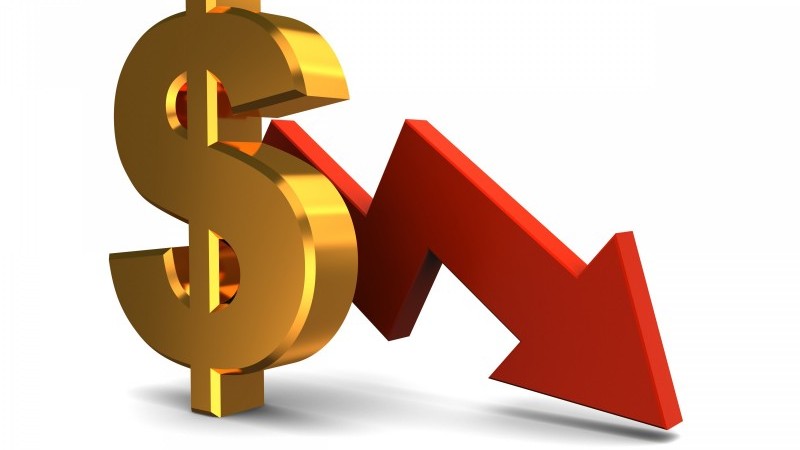The whole world seems to be talking about it ad nauseam, and the majority of the pundits have made their bets for the dollar to depreciate in a more meaningful manner entering 2021 and America’s new presidency. The doubters still believe in the reserve currency status and the lack of viable alternatives. And they aren’t wrong. When it comes to full convertibility and the benefit of the deepest government bond market ever, the dollar still has very much to offer.
FX traders don’t seem to be so sure these days, though, and probably rather err on the side of caution. Not for no reason has the greenback been exchanging into other currencies on the soft end recently and appears almost on the verge of breaking down, at least in a technical sense. A large part of the problem has undoubtedly been America’s departure from the formal and traditional strong-dollar-policy diction commencing with the Trump administration that preferred to use the dollar for its economic war rhetoric.
From a fundamental angle, however, why would Washington be interested in a lower dollar, to begin with? Well, at least the theory gives us reason to believe that America’s current account deficit could be corrected in that way and incremental production be brought back onshore. Then, foreign holders of US debt would be diluted. And also, as America has become energy sufficient, there would no longer be a reason to overly care about the dollar’s external purchasing power.
Some claim that the taboo of the diction has been broken, and there was no way to put the genie back into the bottle. Others argue that despite the dollar’s historic standing as the sole reserve anchor the unprecedented money creation and consequent monetary inflation across the past decade would eventually break the dam and lead us to more material dollar depreciation, maybe similar to the Plaza Accord in the 1980s.
Fact is that the Biden presidency, along with the appointments already made, will have no other choice but to step on the gas pedal and go all-out on fiscal and monetary expansion, even from such elevated levels. Skeptics are pointing at the thin Democratic majority in the House and likely resistance of a Republican Senate, but it is to be expected that the Biden/Yellen duo will pull all stops out, play every trick in the book to boost spending, and have the Fed pay for it.
In any case, markets will make their own call, and they seem to be making it as we speak. The DXY index, a measure of the Dollar FX with a basket of other currencies is on the brink of breaking below the previous support level of 92 and test the 2018 lows of 88/89, a potentially imminent 4% decline. Further setbacks could easily be triggered and take the index to the 80 thresholds, the lowest since 2014, or even back to the early 70s from 2008, the equivalent of a 25% decline from the current spot.
Now, as we are aware, the DXY basket is heavily geared toward the Euro and almost moves in lockstep. In Euro FX terms, such a scenario is equivalent to 1.40 and 1.60, respectively, from the current 1.19 level. But, but, but… isn’t the ECB printing as many Euros if not more? This is absolutely correct and a true enigma. It should not give investors any reason to pile up exposure to the Euro, apart from the fact that central bank diversification away from dollars favours it.
The Pound Sterling is in a similar situation. There is hardly any grounds to bet on the British economy, particularly with what Chancellor Rishi Sunak has just been saying on the air. Still, the Pound is being strong against the dollar and eagerly on course back to the 2018 highs. The decline against the Yen has been steadier and more gradual, but also here, the 100 mark is in sight and will potentially be broken on the down in the near future.
It is not just the G7 majors that are giving us hints. EM currencies are pointing at an impending dollar decline. Keeping obvious problem cases such as Turkish Lira and Argentine Peso out of the equation, the rest of the pack are indicating a turn of events. The likes of South African Rand, Mexican Peso, and Indonesian Rupiah, for example, have rallied by around 15-20% in the past 6 months. Indian Rupee and Brazilian Real are forming a solid bottom, and the Russian Ruble is benefitting from crude prices.
So, if you believe in the charts and the momentum, how to best hedge against an impending dollar risk? Not easy… Buying Euros will deprive you of carry. You might even have to pay for holding the currency. Sterling isn’t much better unless property is your thing. But even there, I hear London real estate prices haven’t eased much. Yen is hopeless, and the EM currencies offer a limited scope of employing funds.
It brings me back to what I have been voicing on numerous occasions in this space. The Renminbi, with all its shortcomings of not being as fully convertible as the dollar, has rallied substantially in recent months, and I believe there is more to come. More importantly, there are benefits to carrying the currency. Overnight rates vary between 1.5-3.5% on average, and a 1-week bank deposit currently yields 2%+. Also, the HK Connect mechanism allows for easy access to interesting onshore equity investments.
The other alternative is gold. To be sure, the price has suffered recently in the wake of positive vaccine and presidential transition news, but in light of an avalanche of global money creation to mitigate deeply recessionary effects in most of the world, there should be confidence to add to positions at these levels.
